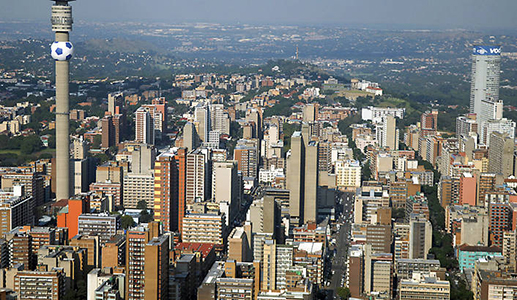This week, the City of Johannesburg launched a new strategy to improve the municipality’s security of consistent electricity supply for citizens and businesses. The City of Johannesburg, led by executive mayor Mpho Moerane, has begun an energy mix Energy Sustainability Strategy for the municipality to increase the city’s capability to meet expanding developmental demands.
Leia também: Thyssenkrupp considera usar minas antigas para armazenamento de energia hidrelétrica bombeada
The new approach aims to boost the city’s energy mix by 500 MW of gas and solar capacity
City Power now gets 90% of its electricity from Eskom, the state-owned power provider, and 10% from Kelvin Power Station, a commercial power generator.
Moerane said the city was looking towards taking over Eskom-supplied districts in Johannesburg, like Sandton and Soweto.
Enquanto isso, de acordo com Poder da cidade‘s 15-year Energy Sustainability Strategy, the company will be a cables business that will continue to offer conventional power and encompass distributed energy generating and energy storage facilities as its primary business.
According to the mayor, the The City of Johannesburg energy mix strategy is a long-term plan connected with the GDS 2040, the Joburg Growth and Development Strategy. It also aligns with the city’s Climate Action Plan, which seeks to produce at least 35% of its electricity from renewable sources by 2030.
Call for bids to meet the City of Johannesburg energy mix strategy
With the release of an official public call for bids from independent power providers, the new alternative energy mix plan will get underway by the end of this week.
It will use a different alternative energy mix, with 200 MW of solar PV farms and rooftop suppliers; 200 MW of private PV electricity generation on the grid via wheeling and trading with customers; 50 MW of gas-powered electricity generation; and 25 MW of capacity from waste-to-energy opportunities at the Robinson Deep landfill site.
This puts the city on track to meet its goal of supplying 35% of Johannesburg’s electricity from renewable and greener sources by 2030.
This implies the city will lower its reliance on Eskom for generating capacity by up to 15%, reducing the likelihood of Eskom’s programmed load-shedding. Moerane went on to say that the additional alternative sources’ capacity will, without a doubt, free Johannesburg from load-shedding in the near future.
In addition, the city is actively seeking alternative creative solutions, such as the development of power plants with a capacity of up to 100 MW, as called for in Schedule 2 of the Electricity Regulation Act.
City Power has invested R10 billion in 14 significant projects to achieve a cleaner energy-generating mix, all of which are in line with the city’s energy policy, the approved Integrated Resource Plan, and the National Development Plan.
According to the MMC for Environmental Infrastructure Services, the new energy mix policy will ensure that everyone in the city, even the impoverished, has access to inexpensive power.
